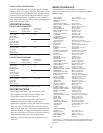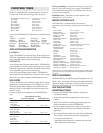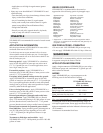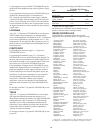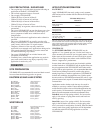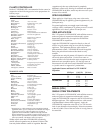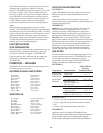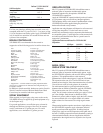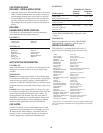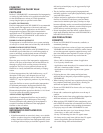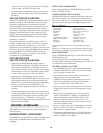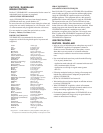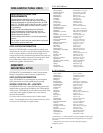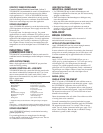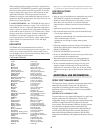
USE PRECAUTIONS
RELEASE - GRID & SINGLE STEM
• Application of DuPont™ VELPAR® DF spots closer than 36
inches to conifer seedlings in their first season or directly up
slope from these seedlings may result in injury or mortality.
• Use VELPAR® DF on seedlings in their first or fourth year
and older. Injury may result from use on two and three year
old seedlings where root growth is extensive but hardiness is
lacking.
RELEASE
HERBACEOUS WEED CONTROL
VELPAR® DF is recommended for controlling herbaceous
weeds where the following species are grown:
EASTERN US
WESTERN US
APPLICATION INFORMATION
EASTERN US
Apply VELPAR® DF as a broadcast or banded spray in the
spring prior to conifer bud break to lessen conifer injury
potential.
WESTERN US
Rainbelt (areas of high spring rainfall): For best results, apply
as a broadcast or banded spray in the late winter or spring when
weeds are actively growing, but prior to conifer budbreak. If
application is made after conifer bud break, use directional spray
equipment to prevent contact with conifer foliage, as injury may
result.
Snowbelt (areas of low spring rainfall): For best results, apply
as a broadcast or banded spray in the fall before soil freezes and
after the final resting bud has hardened on the conifers. Or,
spring applications may be made after snow cover melts in
anticipation of rainfall prior to conifer budbreak. Weed control
results from spring treatments will be dependent on sufficient
rainfall following application to activate VELPAR® DF.
USE RATES
The rates listed below are for broadcast application. For band
application, use proportionately less. For example, use 1/2 of
the broadcast rates when treating a 3-foot band where row
spacing is 6 feet. Use the higher rate range for the harder to
control (*Suppression) weeds listed in the table below.
EASTERN US
VELPAR® DF (Lb/Acre)
First Year Established
Soil Description Plantings Trees
Loamy sand, 1 1/3 1 1/3 - 1 2/3
sandy loam(50-85% sand)
Loam, silt loam, silt, 1 1/3 - 1 1/2 1 2/3 - 2 1/3
sandy clay loam
Silty clay loam, 1 1/2 - 1 8/10 2 1/3 - 2 2/3
clay loam, sandy clay,
silty clay, clay
Red pine only - Refer to recommended rates in the
APPLICATION INFORMATION - Eastern US table
on page 12.
WESTERN US
Refer to recommended rates in the
APPLICATION
INFORMATION
- Western US table on page 12.
WEEDS CONTROLLED
VELPAR® DF is recommended for the control or
suppression of the following species in release sites:
* Suppression – a visible reduction in plant population and/or plant
vigor as compared to an untreated area and generally not accepted
as control.
Asters Aster spp
Aster, heath* Aster ericoides
Barnyardgrass Echinochloa crus-galli
Bentgrass Agrostis spp
Bluegrass, annual Poa annua
Brackenfern Pteridium aquilinum
Bromegrass Bromus spp
Carrot, wild Daucus carota
Crabgrass* Digitaria spp
Daisy, oxeye Chrysanthemum leucanthemum
Dandelion, common* Taraxacum officinale
Dandelion, false*
(spotted catsear) Hypochaeris radicata
Dock, curly* Rumex crispus
Fescue* Festuca spp
Fireweed*(willowweed) Epilobium angustifolium
Fleabane Conyza spp
Foxtail Setaria spp
Goldenrod* Solidago spp
Groundsel, common Senecio vulgaris
Horseweed/marestail Conyza canadensis
Orchardgrass * Dactylis glomerata
Panicums Panicum spp
Pinegrass Calamagrostis rubescens
Ragweed, common Ambrosia elatior
Ryegrass, Italian (annual) Lolium multiflorum
Ryegrass, perennial* Lolium perenne
Smartweed, Pennsylvania Polygonum pensylvanicum
Squawcarpet Ceanothus prostratus
Velvetgrass, common Holcus lanatus
Blue spruce
Douglas fir
Engleman spruce
Grand fir
Jeffrey pine
Lodgepole pine
Noble fir
Ponderosa pine
Sitka spruce
Western hemlock
White fir
Loblolly pine
Longleaf pine
Slash pine
Red pine
16



